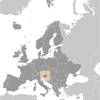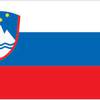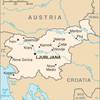Slovenia [+]Compare [E]dit [H]istory
Aliases: People's Republic of Slovenia, Republic of Slovenia, Republika Slovenija, SlovenijaObject «Slovenia» was created due to
Add new object to «Slovenia» or move existing objects here.
Object «Slovenia» has attributes [Show empty attributes][Hide empty attributes]
| Attribute | Value |
|---|---|
| Geography | |
| Area | 20,273 km² |
| Continent | Europe |
| Land area | 20,151 km² |
| Water area | 122 km² |
| Land boundaries | 1,211 km |
| Border countries |
|
| Coastline | 46.6 km |
| Mean elevation | 492 m |
| Lowest point | 0 m |
| Highest point | 2,864 m |
| People | |
| Population | 2,102,678 |
| Official languages |
|
| Religion | Catholic |
| Government | |
| Long country name | Republic of Slovenia |
| Short country name | Slovenia |
| Long local name | Republika Slovenija |
| Short local name | Slovenija |
| Former name |
|
| Government type | Parliamentary republic |
| Capital | Ljubljana |
| Economy | |
| GDP (PPP) | 71,230,000,000 USD |
| GDP (OER) | 48,870,000,000 USD |
| GDP (real growth rate) | 5 % |
| GDP - per capita (PPP) | 34,500 USD |
| Gross national saving | 26.4 % of GDP |
| Labor force | 959,000 |
| Unemployment rate | 6.6 % |
| Population below poverty line | 13.9 % |
| Budget revenues | 21,070,000,000 USD |
| Budget expenditures | 21,060,000,000 USD |
| Military expenditures | 1.04 % of GDP |
| Taxes and other revenues | 43.1 % of GDP |
| Budget surplus or deficit | 0 % of GDP |
| Public debt | 73.6 % of GDP |
| Inflation rate | 1.4 % |
| Central bank discount rate | 0 % |
| Commercial bank prime lending rate | 2.59 % |
| Stock of narrow money | 21,530,000,000 USD |
| Stock of broad money | 21,530,000,000 USD |
| Stock of domestic credit | 35,340,000,000 USD |
| Market value of publicly traded shares | 6,328,000,000 USD |
| Current account balance | 3,475,000,000 USD |
| Exports | 32,140,000,000 USD |
| Imports | 30,380,000,000 USD |
| Reserves of foreign exchange and gold | 889,900,000 USD |
| External debt | 46,300,000,000 USD |
| National currency | euros |
| National currency (code) | EUR |
| National currency (symbol) | € |
| National currency rate to USD | 0.885 |
The Slovene lands were part of the Austro-Hungarian Empire until the latter's dissolution at the end of World War I. In 1918, the Slovenes joined the Serbs and Croats in forming a new multinational state, which was named Yugoslavia in 1929. After World War II, Slovenia was one of the republics in the restored Yugoslavia, which, though communist, soon distanced itself from the Soviet Union and spearheaded the Non-Aligned Movement. Dissatisfied with the exercise of power by the majority Serbs, the Slovenes succeeded in establishing their independence in 1991 after a short 10-day war. Historical ties to Western Europe, a growing economy, and a stable democracy have assisted in Slovenia's postcommunist transition. Slovenia acceded to both NATO and the EU in the spring of 2004; it joined the euro zone and the Schengen zone in 2007.
Similar objects
Most often compared with
Everyone can something to edit or add.
There were 2 edits, no edits waiting approval. Last edited by Guest_1196(-101), May 26, 2020 (51 fields were changed)
Help · Contact us · Disclaimer · Contributors · Developers · Donate


